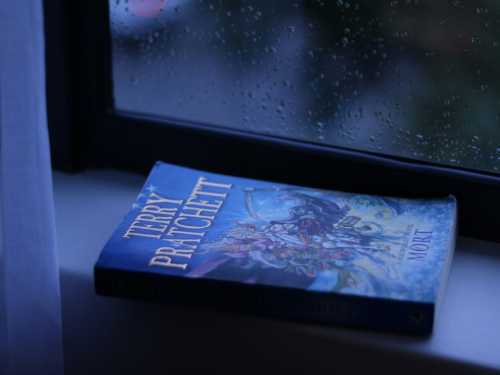
Whenever I see Steely Dan referenced anywhere, I experience a nonsensical jolt of recognition and identification, and never forget it. “Any Steely Dan come in?” the receptionists at a radio station ask in a Joan Didion essay. I once spent hours locating a video clip in which Stephen Colbert announces, in a bit on “The Late Show,” that he knows the lyrics to every Steely Dan song. John Mulaney also happens to be a huge Steely Dan fan. In a scene from the cartoon “The Fairly OddParents,” Vicky, the evil babysitter, has a boyfriend named Ricky, who dumps her at the end of the episode. She yells, “Ricky! Don’t lose my number! You don’t have to call nobody else!”
Steely Dan, the band famous for a certain brand of cynical, pristine nineteen-seventies jazz-infused rock, released their first album, “Can’t Buy a Thrill,” fifty years ago. They have retained a core of perfectionistic, hyperverbal fans ever since. In high school, my twin sister, Katie, and I were constantly visiting the Steely Dan Dictionary, a fan Web site whose creators would define every arcane word that Walter Becker and Donald Fagen used in their lyrics. You could look up who Cathy Berberian was, learn of mysterious substances such as retsina or kirschwasser or Brut, or discover that a squonk was “a mythical woodland creature, originating in Pennsylvania,” which spent most of its time crying because of how ugly it was.
My obsession with Steely Dan began when I was seventeen, and, even at the time, I thought it was deeply weird that my sister and I were so into an obscure band that was thoroughly identified with white middle-aged men. We were, after all, clueless teen-agers growing up in a suburb of Los Angeles populated mostly by quietly wealthy Taiwanese immigrants and their children. And yet practically every Steely Dan song irresistibly conjures up images from my youth: lying on the carpet in the living room, listening to “Glamour Profession” and staring out at the large, unidentifiable fronds in our neighbor’s back yard, or waiting for my high-school boyfriend to message me on Google Chat on some warm school night, while my tinny laptop speakers emitted the mournful sax solos of “Deacon Blues.”
The way that people get into Steely Dan is usually fuzzy, a gradual awakening rather than a bolt of pure feeling. I happened to hear “Do It Again” once, somehow, in the summer before my senior year of high school, and suddenly Katie and I couldn’t stop listening to Steely Dan. Really, we were just playing “Turn That Heartbeat Over Again” over and over again—a jangly, insistently cheerful song in which Donald Fagen sings with gusto about, among other things, a reanimated corpse. We were entranced. What was with these harmonies, so strange and so addictive? What on earth did “Love your mama, love your brother / Love ’em till they run for cover” mean? Who would make a song like this?
Over the course of the year, we worked our way through “Can’t Buy a Thrill,” “Countdown to Ecstasy,” “Pretzel Logic,” “Katy Lied,” “The Royal Scam,” “Aja,” and “Gaucho,” all of which I torrented off the Internet. Our house—a low-slung, nineteen-fifties California ranch-style design—had an open floor plan, which meant that music played on any speaker system was audible to everyone in the house. Our parents were subjected to replay after replay of Steely Dan’s first seven albums. “What are you listening to?” they’d ask on their way to the kitchen or the garage, bemused. Or they’d say, in Mandarin, “This sounds so bad!”
At that point, Katie and I lived in the sort of ethnic enclave where we were shuttled to various private tutors during the summers and received packets of math problems to complete. When my cousins and my sister and I were applying for college, the admissions process was all that our parents would talk about whenever we convened for family gatherings. Even our grandmother would join in. “Hah-fuo,” she would say, sidling up to us with a significant look in her eye. That’s Mandarin for “Harvard.” The year that we discovered Steely Dan, Katie and I spent much of our time at home, dutifully writing papers on “Hamlet” and working through A.P. Physics problem sets.
But, even in our own town, we were oddballs. Our peers attended the excellent local public schools, played in the marching band at Friday-night football games, went to Bible study, and hung out at one another’s houses to play video games. They were easygoing, well adjusted, and seemingly unconcerned with overly specific things; they didn’t, as far as we could tell, go down strange rabbit holes. They listened to KIIS-FM. Katie and I, meanwhile, were enrolled at a mostly white private all-girls school in a different city, where we insisted on taking six years of Latin instead of Spanish or French, and where we once went around earnestly asking all the teachers what they thought the meaning of life was. The only stations that our parents’ car radios were ever tuned to were KUSC, the public classical station, and K-Mozart, the classical station that played ads. Consequently, we had no idea what music other kids our age were listening to, and certainly no connection to whatever new music was coming out. My parents were children of the seventies, but the pop music they listened to was the chart-topping American fare that had filtered across the ocean to Taiwan—Carole King, Roberta Flack, Simon & Garfunkel, Don McLean.
Part of Steely Dan’s appeal was how they managed to perfectly capture what it felt like to live in the suburbs and never quite fully belong. Their songs are populated by atomized weirdos who often inhabit vaguely Western landscapes (the gunslinging desperados on the album “Pretzel Logic,” the sleazy L.A. types of “Glamour Profession”) and by disaffected suburbanites, like the housewives in “Deacon Blues.” They weren’t a band that you emoted to with other people—all you needed were the songs themselves, which were layered and complex enough that they didn’t wear out after ten, twenty, fifty replays. The best way to listen to Steely Dan was alone, or with a fellow-connoisseur, in a quiet room where you both could sit and maybe bob your head to the music if you were really getting into it. You were not required to be part of a “scene” to be a rabid fan—the band stopped touring in the seventies, a couple of years after “Can’t Buy a Thrill” came out, in order to focus on writing and recording. Even when Katie and I had the means to attend a Steely Dan concert, after we graduated college, we mostly stood around feeling alienated from the dancing boomers, and this was arguably a more authentic Steely Dan experience. (We still, however, bought a couple of famously ugly Steely Dan T-shirts.)
Steely Dan was also distinctly unshareable, a convoluted inside joke that only Katie and I seemed to get. Play any of their songs to a Steely Dan virgin—with the possible exceptions of “Do It Again,” “Reelin’ in the Years,” “Peg,” and other crowd favorites—and he or she will likely be turned off by the cryptic lyrics, the sheen of “easy listening,” and whatever Donald Fagen does to make his voice sound like that. The boyfriends I’ve played Steely Dan for have been politely nonplussed or condescendingly tolerant. And then there are all those songs that are downright unpleasant, about child molesters or coke dealers or abusive partners. But even those songs, or the albums that I don’t adore (such as “The Royal Scam”), spark in me a strange sense of ownership, the way that you might feel about a relative who embodies your family’s most annoying foibles.
In any case, I felt a surprising amount of identification with Steely Dan when I was younger. I remember reading Robert Christgau’s few negative reviews and feeling a flush of embarrassed resentment: I was being personally attacked. Then there was that strain of criticism which held that the sheer slickness of Steely Dan’s later records, their neurotic pursuit of perfection, was bad. In a review of “Aja” published in 1977, a critic for Rolling Stone wrote dismissively that Steely Dan “declined to venture beyond the insular comfort of L.A. studios.” More recently, in a warm reconsideration of “Aja” for Pitchfork, Amanda Petrusich neatly summed up a common critique of the band’s music: “Listening to their records felt like running my hands along a slab of polished marble—there were no craggy bits to grab on to, no easy way to find purchase—and so for years, I believed that Steely Dan’s seeming aversion to sincerity meant that they were cold and dorky.”
I don’t think that I could have articulated this then, but my resentment was surely a response to my own perceived place in American culture, as much as any aesthetic disagreement. Steely Dan’s songs were soulless, people argued, because they were created in a pressure chamber of perfectionism. And yet weren’t Katie and I also declining to venture beyond the insular comfort of our L.A. home, toiling in isolation to land the “perfect” performance? I was already sensitive to the idea that kids like me, Asian American kids groomed for college, might have been technically flawless—we had the grades—but that we lacked personality, realness. We were rehearsed, “cold and dorky,” even. But these stereotypes had so little to do with my actual life.
My sister and I were pack rats when it came to cobbling together an identity, snatching up the glimpsed fragments of other people’s experiences to try and understand ourselves. Faced with generalizations, I wanted to be particular. I couldn’t help but be particular. And Steely Dan was nothing if not weird and almost aggressively sui generis. It seemed almost miraculous to me, back then, that two white guys from New York in the seventies could manage to capture something of how it felt to be a misfit teen-age Taiwanese American girl circa 2010. It still seems miraculous. ♦
Sourse: newyorker.com






